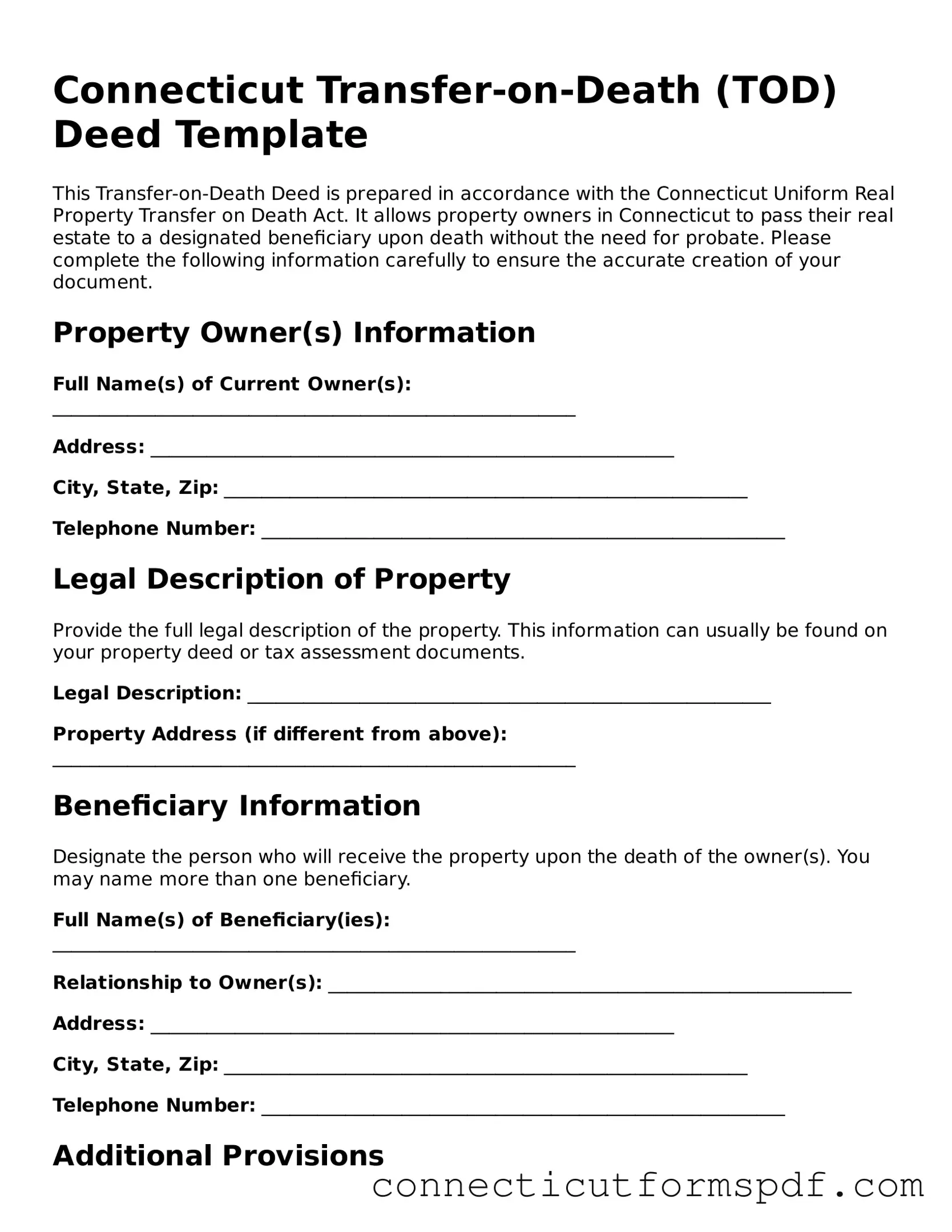Connecticut Transfer-on-Death (TOD) Deed Template
This Transfer-on-Death Deed is prepared in accordance with the Connecticut Uniform Real Property Transfer on Death Act. It allows property owners in Connecticut to pass their real estate to a designated beneficiary upon death without the need for probate. Please complete the following information carefully to ensure the accurate creation of your document.
Property Owner(s) Information
Full Name(s) of Current Owner(s): ________________________________________________________
Address: ________________________________________________________
City, State, Zip: ________________________________________________________
Telephone Number: ________________________________________________________
Legal Description of Property
Provide the full legal description of the property. This information can usually be found on your property deed or tax assessment documents.
Legal Description: ________________________________________________________
Property Address (if different from above): ________________________________________________________
Beneficiary Information
Designate the person who will receive the property upon the death of the owner(s). You may name more than one beneficiary.
Full Name(s) of Beneficiary(ies): ________________________________________________________
Relationship to Owner(s): ________________________________________________________
Address: ________________________________________________________
City, State, Zip: ________________________________________________________
Telephone Number: ________________________________________________________
Additional Provisions
If there are specific conditions or limitations you wish to apply to this transfer, list them below. It’s recommended to consult with a legal professional to ensure these provisions comply with Connecticut law and do not invalidate your deed.
Provisions: ________________________________________________________
Execution
To be valid, this Transfer-on-Death Deed must be signed in the presence of a notary public.
Owner(s) Signature: ________________________________________________________
Date: ________________________________________________________
This document must be notarized and recorded with the appropriate Connecticut county recorder’s office before it becomes effective.
Notary Public
State of Connecticut
County of: ________________________
On ________________________, before me, ________________________ (notary public), personally appeared ________________________, proven to me on the basis of satisfactory evidence to be the person(s) whose name(s) is/are subscribed to the within instrument, and acknowledged to me that he/she/they executed the same in his/her/their authorized capacity(ies), and by his/her/their signature(s) on the instrument, the person(s), or the entity upon behalf of which the person(s) acted, executed the instrument.
Notary Signature: ________________________
Date: ________________________
My commission expires: ________________________
